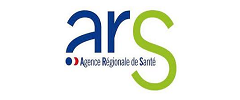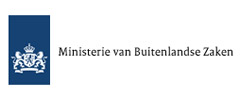Formaldehyde carcinogenic
High levels of formaldehyde in evaporations from Ajax and other cleaning products found in France
02.11.2004 |Sonja Haider
An estimated one million workers are exposed across the European Union
The French Consumer Union “Union fédérale française des consommateurs (UFC)”, demands the immediate retreat from the market of 2 cleaning agents, Ajax and Saint-Marc which emit high levels of formaldehyde, even 4 hours after use (see article in French below)."Twenty-six scientists from 10 countries evaluated the available evidence on the carcinogenicity of formaldehyde, a widely used chemical", reports Dr Peter Boyle, Director of the International Agency for Research on Cancer (IARC), part of the World Health Organization. The working group, convened by the IARC Monographs Programme, concluded that formaldehyde is carcinogenic to humans. Previous evaluations, based on the smaller number of studies available at that time, had concluded that formaldehyde was probably carcinogenic to humans, but new information from studies of persons exposed to formaldehyde has increased the overall weight of the evidence.
Based on this new information, the expert working group has determined that there is now sufficient evidence that formaldehyde causes nasopharyngeal cancer in humans, a rare cancer in developed countries. "Their conclusion that there is adequate data available from humans for an increased risk of a relatively rare form of cancer (nasopharyngeal cancer), and a supporting mechanism, demonstrates the value and strengths of the Monographs Programme," emphasized Dr Boyle.
The working group also found limited evidence for cancer of the nasal cavity and paranasal sinuses and "strong but not sufficient evidence" for leukaemia. The finding for leukaemia reflects the epidemiologists’ finding of strong evidence in human studies coupled with an inability to identify a mechanism for induction of leukaemia, based on the data available at this time. "By signalling the degree of evidence for leukaemia and cancer of the nasal cavity and paranasal sinuses, the working group identified areas where further clarification through research is needed. This represents a service to Public Health", Dr Boyle concluded.
Formaldehyde is produced worldwide on a large scale. It is used mainly in the production of resins that are used as adhesives and binders for wood products, pulp, paper, glasswool and rockwool. Formaldehyde is also used extensively in the production of plastics and coatings, in textile finishing and in the manufacture of industrial chemicals. It is used as a disinfectant and preservative (formalin) in many applications.
Common sources of exposure include vehicle emissions, particle boards and similar building materials, carpets, paints and varnishes, foods and cooking, tobacco smoke, and the use of formaldehyde as a disinfectant. Levels of formaldehyde in outdoor air are generally low but higher levels can be found in the indoor air of homes.
Occupational exposure to formaldehyde occurs in a wide variety of occupations and industries: for example, it is estimated that more than one million workers are exposed to some degree across the European Union. Short-term exposures to high levels have been reported for embalmers, pathologists and paper workers. Lower levels have usually been encountered during the manufacture of man-made vitreous fibres, abrasives and rubber and in formaldehyde production industries. A very wide range of exposure levels has been observed in the production of resins and plastic products. The development of resins that release less formaldehyde and improved ventilation has resulted in decreased exposure levels in many industrial settings in recent decades.
The working group also evaluated two glycol ethers (2-butoxyethanol and 1-tert-butoxy-2-propanol) and evaluated these as not classifiable as to their carcinogenicity to humans, due to the inadequate level of evidence in humans and limited evidence in experimental animals available to the experts. Further research is needed on these widely-used solvents.
Les nettoyants Ajax et Saint-Marc cancérigènes? (27/10/2004)
Une enquête sème le doute: les fabricants se veulent rassurants
BRUXELLES Une vingtaine de produits ont été passés au crible de cette enquête conduite à l'initiative de l'Union fédérale française des consommateurs (UFC), qui en communique les résultats par le biais de son support Que Choisir. Verdict sans appel, puisque cette association demande «le retrait immédiat du marché des deux nettoyants multi-usages Ajax et Saint-Marc» - dans leur formule au savon de Marseille - accusés d'émettre un gaz cancérigène.
Ou, plus précisément, de dégager, dans l'air ambiant, des concentrations jugées trop élevées de formaldhéyde, un consommateur présent un peu partout dans notre environnement. On le retrouve ainsi, pour ne citer que ces exemples, dans les vêtements (notamment comme défroissant), dans les cosmétiques (shampooings, savons, dentifrices...), dans les produits ménagers et alimentaires (comme agent conservateur), dans la fumée, dans certains meubles, dans la moquette... Bref, cette substance est très largement utilisée par l'industrie.
Et il est un fait que ce gaz est depuis longtemps considéré comme particulièrement irritant pour les voies respiratoires, les yeux, mais aussi la peau, alors qu'il a été classé cancérigène par le Centre international de recherche sur le cancer. Or, indique l'UFC, «les mesures relevées lors de notre test se sont avérées très excessives, notamment pour les personnes âgées ou asthmatiques et les enfants» ; des concentrations «dommageables pour les personnes sensibles».
L'Organisation mondiale de la santé (OMS) recommande de ne pas respirer de l'air contenant 100 microgrammes par mètre cube pendant plus d'une demi-heure. Pour les personnes sensibles, cette concentration ne doit pas dépasser 10 microgrammes par mètre cube.
Réglementaires
Or, 30 minutes après avoir nettoyé le sol d'une pièce avec de l'Ajax au savon de Marseille, l'UFC a mesuré 27 microgrammes de formaldéhyde par mètre cube d'air; et 24 microgrammes/m3 avec Saint-Marc. Même «quatre heures après leur emploi», les deux produits continuent à émettre dans les mêmes proportions.
Les fabricants des produits Ajax (Colgate Palmolive) et Saint-Marc (Reckitt Benckiser) ont à la fois réaffirmé la conformité de ces nettoyants à la réglementation actuelle et indiqué que leurs services techniques s'occupent du dossier.
J. M.
© La Dernière Heure 2004

































